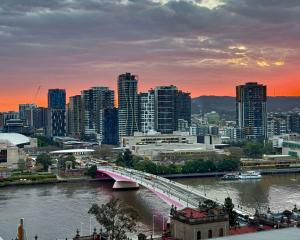Sandip Hor delves into the torrid history of Armenia.
‘‘It's a great destination to get connected with the Bible,'' my Armenian friend Stefan tells me when I reveal plans to visit his motherland.
His comment makes immediate sense when I arrive in the capital Yerevan and catch a glimpse of the fabled Mt Ararat looming over the city.
The distant view of the snowcapped mountain is hypnotic.
I finally pinch myself to confirm that I am indeed looking at the mythical landmass where Noah's Ark is said to have come to rest after the Great Flood.
While fluffy balls of clouds keep covering and uncovering the peak, my mind fills in the rest with many stories from Genesis.
This former Soviet-bloc nation may be geographically located in the Caucasus region between Asia and Europe, but it dwells spiritually in the heart of many religiously minded folk, being the world's first Christian country.
Legend says that not long after Christ's death, his two apostles Bartholomew and Thaddeus introduced and spread the faith in this mountainous domain.
Over time, leaders secular and spiritual have built several cathedrals and monasteries, a conical roof resembling Mt Ararat being a distinctive feature of the architecture.
Some of them are located just outside Yerevan's city limits and should rank at the top of every visitor's itinerary, even if they have misgivings about matters of faith themselves.
The first stop is unquestionably the Echmiadzin Cathedral, better known as the Mother Cathedral of Armenia.
Located 20km from Yerevan, it was built about AD303, inspiring many scholars to claim it to be the oldest cathedral in the world.
Legend proclaims Jesus Christ descended from heaven himself to show where he wanted a shrine to be built, so Echmiadzin means ‘‘the only-begotten descended''.
The cathedral has stood through some torrid centuries, as the history of Armenia is not one of unbroken peace.
Between the 16th and early 19th centuries, the traditional Armenian homeland was a playground of the Ottoman, Persian and Russian empires.
They fought battles, set seas aflame, and stained almost every stone with blood in their struggles for sovereignty.
In the mid-19th century, the eastern part was wrenched from Persian control by Russia, while most of the western part remained under Ottoman rule.
During World War 1, the Ottomans systematically exterminated Armenians in the territory it held, in a genocide that has been compared to Adolf Hitler's extermination of European Jews.
The winding down of World War 1 hostilities brought independence for Armenia, in 1918, but freedom did not last long, as it became part of the Soviet Union in 1922.
Since the break-up of the Soviet Union in 1991, Armenia has been re-establishing itself as a tourism destination while transforming its cultural, economic, and social and lifestyle frameworks.
Yerevan is the international gateway city to this landlocked nation and offers the best stage to experience a significant slice of its treasure trove from the past and present as well.
Although the city's existence dates back to 800 years before Christ, Yerevan gained prominence only after becoming the national capital in 1918.
The Soviets transformed the sleepy settlement into a thriving neo-classical metropolis, with St Petersburg in the mind of the Russian-born architect Alexander Tamanian.
The cityscape presents a handsome ensemble of grand edifices flanking cobbled streets, tree-lined boulevards, paved squares and green parklands, giving the metropolis of about one million a typically European flavour, with classical flourishes.
Even after two decades of parting, there is still an air of Soviet sprawl, though it is in retreat in the face of more modern influences.
The economy is now in the hands of energetic young cohorts.
Many of them speak English, dress fashionably, drive flashy cars, display the latest Samsung mobile phones and appear to lead a fast life, involving noisy partying at trendy bars and flashy nightclubs.
The older generation views them with some envy, a fair few looking back with nostalgia to the days of the red flag and the equality it stood for.
Republic Square is where the city's heart beats.
Sprinkled with colourful flowerbeds and spiralling fountains, this expansive cemented area is surrounded by government offices, museums and galleries.
At night, when the entire precinct is brightly illuminated, and with the fountains dancing to the tunes of popular Armenian music, it transforms into a carnival where locals and visitors rejoice together.
Adjacent restaurants, cafes and bars do good business throughout the evening.
Yerevan city also has its fair share of cathedrals, most important being the St Gregory the Illuminator Cathedral, which was completed in 2001 to commemorate the 1700th anniversary of Armenia as a Christian nation.
Most piously, the cathedral houses the holy relics of Armenia's patron St Gregory, who is credited with converting Armenia from paganism to Christianity in the 4th century.
It is said that several Hellenic temples existed in Armenia during the pre-Christian period, but all have been swallowed by time except the one at Garni, a small mountainous village about 30km from Yerevan.
Dedicated to the pagan god Mithra, the monument was built in the first century AD.
Its rectangular floor plan laid with circular ornamented columns reminds me of some ancient temple in Greece.
Not far from the site is the 800-year-old Geghard Monastery, a World Heritage monument revered as one of the greatest spiritual and cultural centres in the country.
Spooky and dimly lit inside, it generates an eerie feeling of confinement, as in a cave, where voices bounce off the stone walls.
Though rich in early Christian sites, the one that leaves the most lasting impression is Khor Virap Monastery, because of its scenic placing with Mt Ararat in the background.
It feels so close it is as if I might cross the river in between, trek to the top, and touch the magical Noah's Ark.
CHECK LIST
• Getting there: Fly Emirates (www.emirates.com) from Christchurch or Auckland to Dubai and then flydubai (www.flydubai.com) to Yerevan.
• Stay: Soviet-era built Ani Plaza Hotel (www.anihotel.com) located close to Republic Square.
• Visa: Visa on arrival available for various nationalities, check www.mfa.am for details.
• Currency: $NZ1 = $AMD350 (Armenian dram).












